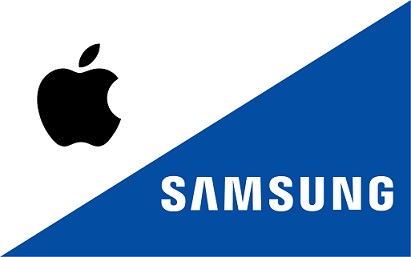- Islamabad
- 26.6°C
- Today ( Tuesday, 27 May 2025)
- Home
- Gadgets & Devices
- Tech Giants Clash in Smartphone Arena: iPhone vs. Samsung Galaxy
Tech Giants Clash in Smartphone Arena: iPhone vs. Samsung Galaxy
In the ever-evolving world of smartphones, two industry titans, Apple and Samsung, continue to vie for dominance with their flagship devices – the iPhone and the Samsung Galaxy series. As consumers face an array of choices, deciding between these technological powerhouses involves weighing design, hardware, software, ecosystem, and pricing considerations. The iPhone, synonymous with Apple's commitment to sleek design, boasts a minimalist aesthetic and premium build quality. Apple's proprietary processors, like the A-series chips, contribute to the iPhone's reputation for smooth performance and tight hardware-software integration. Running on the closed iOS ecosystem, iPhones deliver a user-friendly interface, timely updates, and a curated selection of apps through the App Store. On the other side of the ring, Samsung's Galaxy phones showcase innovative designs, high-quality materials, and a variety of hardware configurations. With the Android operating system and Samsung's custom One UI, users experience a different take on the smartphone interface, enriched with Samsung's unique features and customization options. Ecosystem plays a pivotal role in the user experience, and Apple has long been lauded for its seamless integration across devices. The iPhone syncs effortlessly with other Apple products, fostering a cohesive ecosystem with features like AirDrop and iCloud. Samsung, while not as tightly integrated, offers a growing ecosystem with features like Samsung DeX, providing users with connectivity across smartphones, tablets, smartwatches, and more. Camera capabilities have become a battleground for smartphone supremacy. Apple's iPhones, especially the Pro models, impress users with advanced photography features like Deep Fusion and Night mode. Meanwhile, Samsung's Galaxy series, particularly the flagship S and Note models, stand out for their versatile camera setups, including high-megapixel counts and advanced features such as Space Zoom. Price considerations further differentiate the offerings. iPhones are generally perceived as premium devices with a corresponding price tag, although Apple does cater to a broader market with budget-friendly options like the iPhone SE. Samsung, with its diverse range, provides options across different price points, ensuring accessibility for various budget constraints. In the end, the choice between iPhone and Samsung Galaxy boils down to personal preference, brand loyalty, and the specific features that users prioritize in a smartphone. As these tech giants continue to innovate and release new models, the smartphone arena remains dynamic, offering consumers an exciting array of choices that cater to a variety of needs and preferences.
-
As the upcoming elections draw near, Pakistan finds itself in the midst of a political whirlwind, with the major players employing various strategies to secure their positions. The dynamics are as unpredictable as ever, showcasing the intricate web of alliances, betrayals, and...
-
Luis Rubiales, the ex-president of the Spanish football federation, has been handed a decisive three-year ban by FIFA in response to his controversial behavior following the Women's World Cup final. The ban comes in the wake of reports detailing inappropriate conduct to...
Get Newsletter
Subscribe to our newsletter to get latest news, popular news and exclusive updates.























Facebook Comments